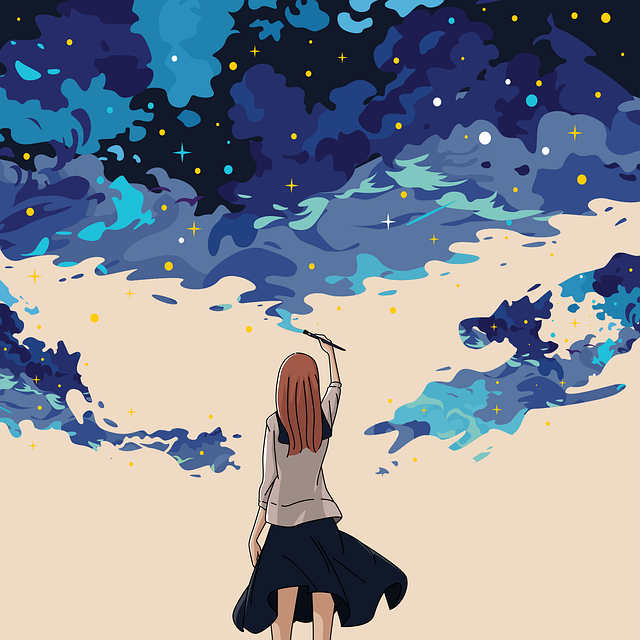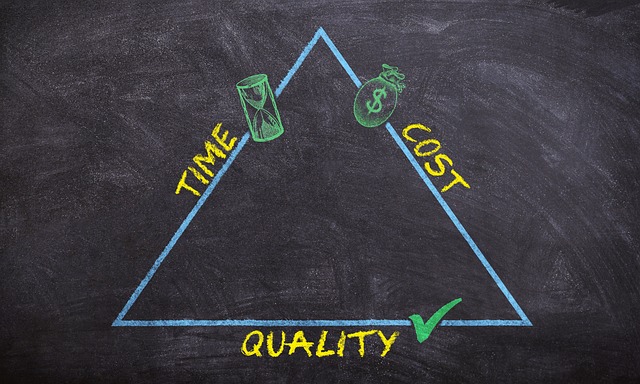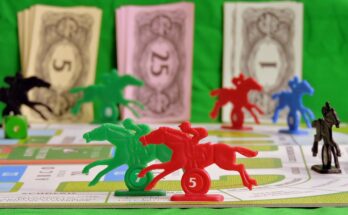Unlock the Secrets of Anime Art
Introduction
Anime, a popular style of animation originating from Japan, is characterized by its distinctive visual style and captivating storytelling. Drawing anime requires a combination of technical skills and artistic expression. This introduction will provide a comprehensive guide to the fundamentals of anime drawing, covering essential techniques, materials, and tips to help aspiring artists create their own unique anime characters and scenes.
Mastering the Basics: A Beginner’s Guide to Anime Drawing
**How to Draw Anime**
Embarking on the journey of anime drawing can be both exhilarating and daunting. However, with a few fundamental techniques and a touch of patience, you can master the basics and bring your anime characters to life.
**Understanding Anime Proportions**
Anime characters often possess exaggerated proportions, with large eyes, small noses, and elongated limbs. To achieve this distinctive style, it’s crucial to understand the “super deformed” (SD) approach. SD characters have disproportionately large heads and small bodies, creating a whimsical and expressive aesthetic.
**Sketching the Basic Shapes**
Begin by sketching the basic shapes that form the character’s body. Use circles for the head, ovals for the torso, and lines for the limbs. Pay attention to the proportions and the overall flow of the figure.
**Adding Details**
Once the basic shapes are in place, start adding details. Draw the eyes, nose, and mouth, using simple lines and curves. Experiment with different eye shapes and expressions to convey the character’s personality.
**Drawing the Hair**
Anime hair is often voluminous and stylized. To draw it effectively, break it down into smaller sections and use flowing lines to create a sense of movement. Pay attention to the direction and texture of the hair, and don’t be afraid to exaggerate its size.
**Clothing and Accessories**
Clothing and accessories can further define the character’s personality and style. Draw the clothing in a simplified manner, focusing on the overall shape and silhouette. Add details such as buttons, zippers, and pockets to enhance the realism.
**Shading and Highlights**
Shading and highlights add depth and dimension to your drawing. Use a soft pencil or charcoal to create shadows in the areas where light is blocked. Conversely, use a white pencil or eraser to create highlights where light reflects.
**Practice and Patience**
Mastering anime drawing takes time and practice. Don’t get discouraged if your first attempts don’t turn out as expected. Keep practicing, experiment with different techniques, and seek feedback from others to improve your skills.
**Conclusion**
Drawing anime is a rewarding and expressive art form that allows you to create your own unique characters and stories. By understanding the basic principles of anime proportions, sketching techniques, and shading, you can embark on this exciting journey and bring your anime dreams to life.
Capturing Expressions: Drawing Anime Faces with Emotion
**Capturing Expressions: Drawing Anime Faces with Emotion**
In the realm of anime, facial expressions play a pivotal role in conveying the characters’ inner thoughts and emotions. Mastering the art of drawing anime faces with emotion is essential for creating compelling and relatable characters.
To begin, it’s crucial to understand the basic facial anatomy. The eyes, eyebrows, mouth, and nose are the primary elements that convey emotion. By manipulating these features, artists can create a wide range of expressions.
For instance, to draw a happy expression, the eyes should be wide and curved upwards, while the mouth should be open in a smile. Conversely, a sad expression is characterized by downturned eyes, a furrowed brow, and a downturned mouth.
Beyond the basic anatomy, subtle nuances can enhance the emotional impact of a face. For example, adding a slight tilt to the head can convey curiosity or shyness. Similarly, adjusting the angle of the eyebrows can create expressions of surprise, anger, or determination.
The eyes are particularly expressive in anime. By varying the shape and size of the pupils, artists can convey a range of emotions, from joy to fear. Additionally, the direction of the gaze can indicate the character’s focus or intention.
The mouth is another key element in expressing emotion. The shape and curvature of the lips can convey happiness, sadness, anger, or disgust. By adding details such as teeth or a tongue, artists can further enhance the emotional impact.
To capture the full range of human emotions, it’s important to study real-life facial expressions. Observing how people express their feelings can provide valuable insights into the subtle nuances that make anime faces so expressive.
Furthermore, practicing regularly is essential for developing the skills necessary to draw anime faces with emotion. By experimenting with different facial features and expressions, artists can refine their techniques and create characters that truly resonate with the audience.
In conclusion, drawing anime faces with emotion requires a deep understanding of facial anatomy, the ability to manipulate features effectively, and a keen eye for detail. By studying real-life expressions and practicing regularly, artists can master this art form and create characters that evoke a wide range of emotions in their viewers.
Dynamic Posing: Creating Lifelike Anime Characters
**Dynamic Posing: Creating Lifelike Anime Characters**
In the realm of anime, dynamic posing plays a pivotal role in bringing characters to life. By capturing the essence of movement and emotion, artists can create characters that resonate with viewers on a deeper level.
To achieve dynamic posing, it’s crucial to understand the principles of anatomy and perspective. Study the human body’s structure and how it moves in different positions. Pay attention to the angles of limbs, the weight distribution, and the subtle shifts in posture that convey emotion.
Next, consider the perspective from which you’re drawing. The angle of view can dramatically alter the impact of a pose. Experiment with different perspectives to find the one that best captures the character’s personality and the desired effect.
One effective technique for creating dynamic poses is to use foreshortening. By exaggerating the length or width of limbs, you can create the illusion of depth and movement. This technique is particularly useful for depicting characters in action-packed scenes.
Another key element of dynamic posing is the use of curves and angles. Curves convey fluidity and grace, while angles add tension and energy. By combining these elements, you can create poses that are both visually appealing and emotionally evocative.
Furthermore, it’s important to consider the character’s personality and the context of the scene when creating a pose. A shy character might have a more reserved posture, while a confident character might strike a more assertive pose. The environment can also influence the character’s stance, such as a character standing tall in a majestic setting or crouching low in a confined space.
By mastering the principles of dynamic posing, you can elevate your anime drawings to new heights. Your characters will become more expressive, engaging, and believable, captivating the attention of viewers and immersing them in the world of your imagination.
Clothing and Accessories: Enhancing Anime Characters with Details

**Clothing and Accessories: Enhancing Anime Characters with Details**
In the realm of anime, clothing and accessories play a pivotal role in defining characters and conveying their personalities. By meticulously crafting these elements, artists can breathe life into their creations and make them truly memorable.
When designing clothing, consider the character’s personality, background, and occupation. For example, a shy and introverted character might wear loose, comfortable clothing in muted colors, while a confident and outgoing character could don vibrant and eye-catching outfits.
Accessories can further enhance a character’s individuality. A pair of glasses can convey intelligence or wisdom, while a scarf can add a touch of elegance or warmth. Jewelry, such as necklaces or earrings, can symbolize a character’s beliefs or personal history.
To draw clothing and accessories effectively, it is essential to understand the underlying anatomy of the human body. This knowledge will allow you to create realistic folds, wrinkles, and movement in the fabric. Pay attention to the way different materials drape and flow, and experiment with various textures to add depth and interest.
When drawing clothing, start with a basic sketch of the character’s body. Then, gradually add layers of clothing, paying attention to the way they interact with the body’s contours. Use light, flowing lines to create a sense of movement and fluidity.
For accessories, focus on capturing their shape and texture. Use sharp, precise lines for metal objects, such as jewelry, and softer, more organic lines for fabrics, such as scarves. Pay attention to the way accessories interact with the clothing and the character’s body.
By mastering the art of drawing clothing and accessories, you can elevate your anime characters to new heights. These elements not only enhance their visual appeal but also provide valuable insights into their personalities and backgrounds. So, embrace the details and let your characters shine through their attire.
Backgrounds and Environments: Setting the Scene for Anime Art
**How to Draw Anime: Backgrounds and Environments**
In the realm of anime art, backgrounds and environments play a pivotal role in setting the tone and atmosphere of the story. They provide context, depth, and a sense of place, immersing the viewer in the world of the characters.
To create compelling anime backgrounds, it’s essential to consider the following elements:
**Perspective and Depth:**
Mastering perspective is crucial for creating realistic and believable backgrounds. Use vanishing points and foreshortening to establish depth and distance. Experiment with different camera angles to achieve dynamic and engaging compositions.
**Lighting and Shadows:**
Lighting plays a significant role in shaping the mood and atmosphere of a scene. Use light and shadow to create depth, highlight focal points, and convey emotions. Consider the direction and intensity of the light source to achieve the desired effect.
**Color and Texture:**
Color and texture add richness and detail to backgrounds. Choose colors that complement the characters and the overall tone of the scene. Use textures to create a sense of realism and depth, such as rough surfaces for buildings or soft textures for foliage.
**Composition and Balance:**
The composition of the background should support the narrative and draw the viewer’s attention to the main elements of the scene. Use the rule of thirds or other compositional techniques to create a balanced and visually appealing layout.
**Details and Storytelling:**
Backgrounds can also be used to tell a story or provide additional context. Include details that hint at the characters’ past or foreshadow future events. For example, a dilapidated building could suggest a character’s troubled history, while a lush forest could symbolize growth and renewal.
**Creating Anime Backgrounds:**
To create anime backgrounds, you can use a variety of techniques:
* **Traditional Drawing:** Use pencils, charcoal, or markers to sketch and render the background.
* **Digital Painting:** Use digital painting software to create backgrounds with vibrant colors and textures.
* **3D Modeling:** Create 3D models of the environment and render them to achieve realistic and detailed backgrounds.
**Conclusion:**
Drawing anime backgrounds and environments requires a combination of technical skill and artistic vision. By mastering perspective, lighting, color, composition, and storytelling, you can create immersive and engaging worlds that enhance the overall impact of your anime art. Remember to experiment with different techniques and styles to find what works best for you and your unique artistic expression.
Digital vs. Traditional: Exploring Different Anime Drawing Techniques
**Digital vs. Traditional: Exploring Different Anime Drawing Techniques**
The world of anime drawing offers a vast array of techniques, each with its unique advantages and challenges. Whether you prefer the tactile experience of traditional tools or the versatility of digital software, understanding the nuances of both approaches can elevate your artistic journey.
**Traditional Techniques: The Tactile Charm**
Traditional anime drawing involves using physical tools such as pencils, charcoal, and ink on paper. This method offers a tangible connection to the artwork, allowing artists to feel the weight of their strokes and the texture of the surface. Traditional techniques foster a deep understanding of line weight, shading, and composition.
The tactile nature of traditional drawing encourages experimentation and spontaneity. Artists can blend and smudge materials to create subtle transitions and expressive effects. However, traditional techniques can be time-consuming and require a certain level of skill to achieve desired results.
**Digital Techniques: Versatility and Precision**
Digital anime drawing utilizes software and digital tools to create artwork on a computer or tablet. This approach offers unparalleled versatility, allowing artists to manipulate layers, adjust colors, and experiment with different brushes and effects. Digital techniques provide precise control over linework, shading, and perspective.
The digital realm also facilitates collaboration and sharing. Artists can easily share their work online, receive feedback, and access a vast library of resources and tutorials. However, digital drawing can lack the tactile connection and spontaneity of traditional methods.
**Choosing the Right Technique**
The choice between digital and traditional anime drawing techniques ultimately depends on individual preferences and artistic goals. Traditional techniques offer a tactile experience and foster a deep understanding of the fundamentals. Digital techniques provide versatility, precision, and ease of collaboration.
For beginners, traditional drawing can provide a solid foundation in the principles of anime drawing. As skills develop, artists may explore digital techniques to enhance their workflow and experiment with new possibilities.
**Combining Techniques: The Best of Both Worlds**
Some artists choose to combine traditional and digital techniques to harness the strengths of both approaches. For example, they may sketch traditionally to capture the initial idea and then refine and color the artwork digitally. This hybrid approach allows for a unique blend of tactile and digital elements.
Ultimately, the best anime drawing technique is the one that empowers artists to express their creativity and achieve their artistic vision. Whether traditional, digital, or a combination of both, the journey of anime drawing is an exploration of self-expression and artistic growth.
Tips and Tricks for Improving Your Anime Drawing Skills
**How to Draw Anime: Tips and Tricks for Enhancing Your Skills**
Embarking on the journey of anime drawing can be both exhilarating and daunting. To elevate your skills and achieve captivating results, consider the following tips and tricks:
**1. Study the Basics:**
Mastering the fundamentals is paramount. Familiarize yourself with anime anatomy, proportions, and facial expressions. Practice sketching basic shapes and lines to develop a solid foundation.
**2. Observe and Analyze:**
Immerse yourself in the world of anime. Study the works of renowned artists, paying attention to their techniques, character designs, and storytelling. Analyze the anatomy, poses, and expressions of your favorite characters.
**3. Practice Regularly:**
Consistency is key. Dedicate time each day to practicing your drawing skills. Start with simple sketches and gradually increase the complexity as you progress.
**4. Use Reference Materials:**
Don’t hesitate to use reference materials such as photographs, anime stills, or online tutorials. They can provide valuable insights into anatomy, perspective, and lighting.
**5. Experiment with Different Tools:**
Explore various drawing tools to find what suits your style. Experiment with pencils, charcoal, markers, and digital software. Each medium offers unique possibilities and challenges.
**6. Pay Attention to Details:**
Anime characters are often characterized by intricate details. Take your time to render eyes, hair, clothing, and accessories with precision. Attention to detail can bring your drawings to life.
**7. Understand Perspective and Lighting:**
Perspective and lighting play a crucial role in creating depth and realism. Study how light interacts with different surfaces and how it affects the appearance of characters.
**8. Develop Your Own Style:**
While it’s important to learn from others, don’t be afraid to experiment and develop your own unique style. Draw inspiration from your favorite artists but incorporate your own creativity and vision.
**9. Seek Feedback and Critique:**
Share your drawings with others and seek constructive criticism. Feedback can help you identify areas for improvement and refine your techniques.
**10. Be Patient and Persistent:**
Drawing anime well takes time and effort. Don’t get discouraged by setbacks. Embrace the learning process and continue practicing with patience and persistence.
Remember, the journey of anime drawing is an ongoing one. By following these tips and tricks, you can enhance your skills, create captivating characters, and bring your anime visions to life.
Conclusion
**Conclusion: How to Draw Anime**
Drawing anime requires practice, patience, and an understanding of the fundamental principles of anatomy, perspective, and shading. By following the steps outlined in this guide, aspiring artists can develop their skills and create their own unique anime characters and scenes. Remember to experiment with different techniques, study the work of professional artists, and seek feedback to continuously improve your abilities. With dedication and perseverance, anyone can master the art of drawing anime.










